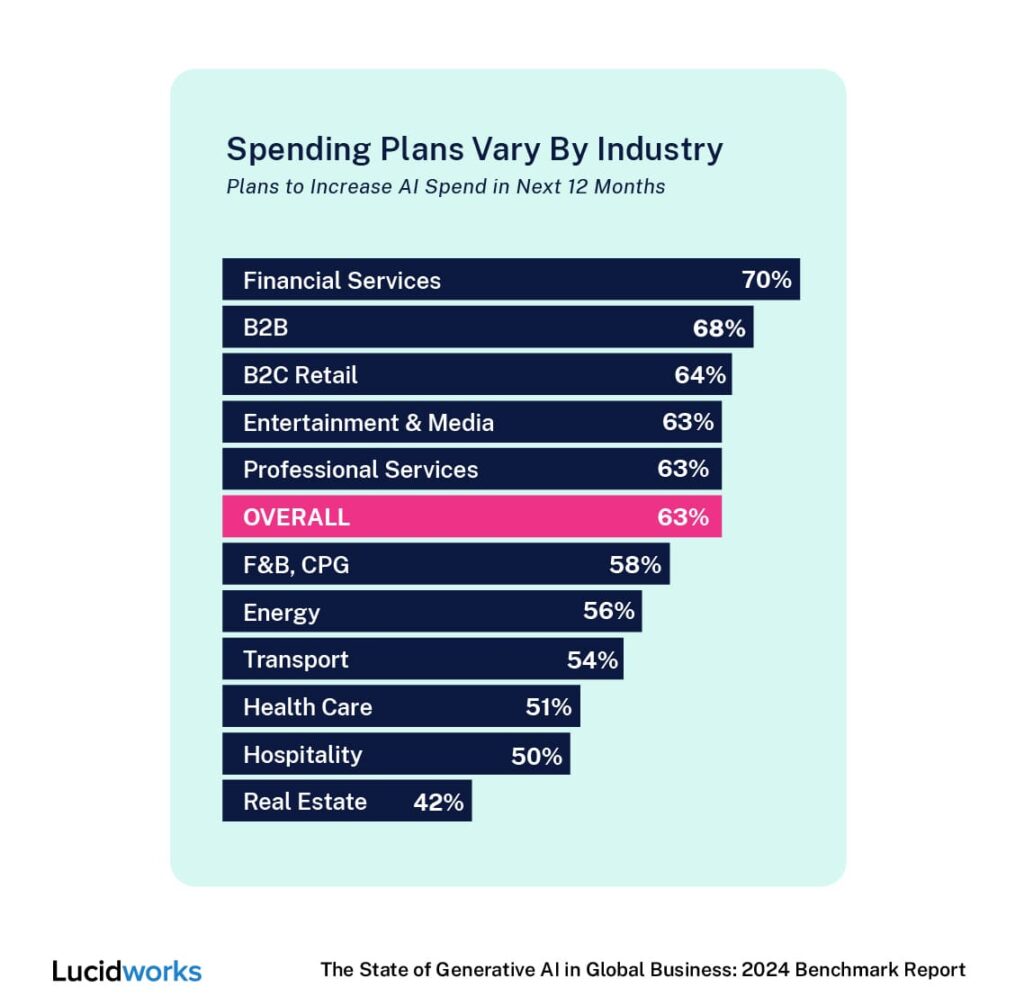
Generative AI in Retail: Leading Adoption, But Feeling the Pressure
Just last week, we released our 2024 Generative AI Global Benchmark Study, revealing a surprising slowdown in AI adoption across industries. But what’s the story on generative AI in retail? Well, it’s a bit of a paradox.
AI-Pioneering Retailers Are Feeling the Heat
Our 2024 study shows that retailers are leading the charge in generative AI adoption. They’re deploying AI solutions at a faster pace than most other industries, particularly when it comes to revenue-generating and growth-focused initiatives. And it’s paying off — nearly half of them are already seeing financial benefits.
Despite these successes, 34% of retailers feel they’re falling behind their competitors. This sense of urgency, coupled with rising implementation costs (a top concern for 64% of retailers), creates a challenging landscape.

The Cost Conundrum
Why the cost concerns? Retailers often need highly responsive and scalable AI solutions to handle the sheer volume of customer queries. This can quickly drive up expenses, especially when using commercial large language models (LLMs).
But there’s more to the story. Retailers are also innovators. Many of them are early adopters of cutting-edge technologies, which can lead to higher upfront costs and a steeper learning curve.
So, how can retailers strike the right balance? The key lies in taking a strategic, phased approach to generative AI in retail.
Steps to Balance Innovation with Practicality
- Start Small, Think Big
Begin with smaller, achievable projects that demonstrate tangible value. For example, use generative AI to enhance product descriptions, generate personalized recommendations, or automate customer service interactions. These quick wins can build momentum and justify further investment.
- Prioritize Governance
Establish clear guidelines for AI use to mitigate risks and ensure ethical and responsible implementation.
- Embrace Open Source
As open-source LLMs mature, they can offer a cost-effective alternative to commercial models.
- Partner with Experts
Working with a trusted AI partner like Lucidworks can help you navigate the complexities of AI adoption and maximize your ROI.
The Future of AI in Retail
The future of retail is undoubtedly intertwined with AI. While the current landscape presents challenges, it also offers immense opportunities for those willing to embrace this technology strategically.
Here’s your strategy: Prioritize practical applications, manage costs effectively, and focus on long-term value. If you get these right, generative AI in retail can enhance the customer experience, streamline operations, and ultimately drive growth.
Are you ready to unlock the full potential of generative AI in retail?
- Download our full 2024 Generative AI Benchmark Study: Get comprehensive insights into AI adoption trends across industries. Get the full report.
- Explore Retail-Focused AI Insights: Discover how retailers are uniquely leveraging and struggling with AI, along with actionable recommendations. Download the retail-focused report.